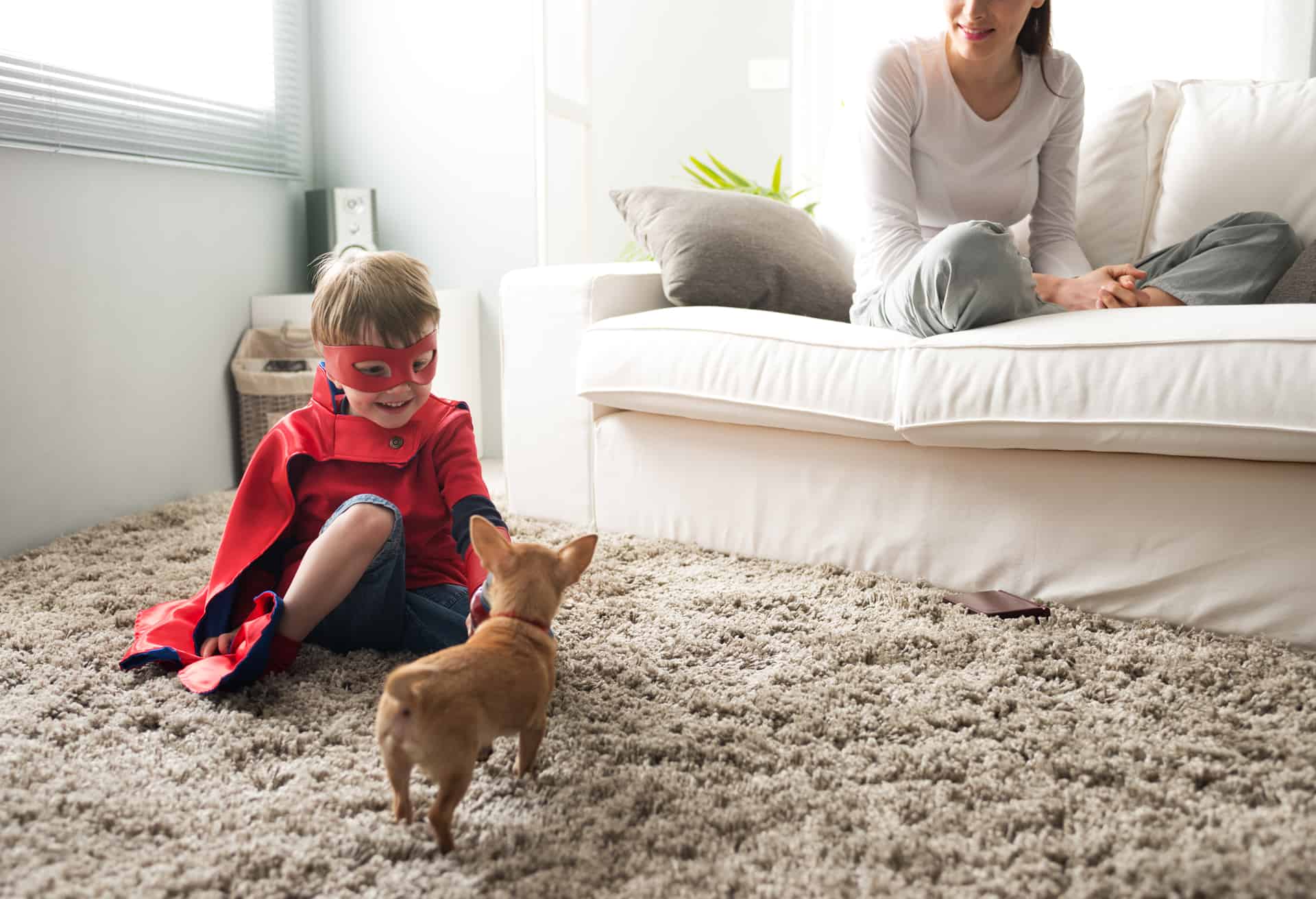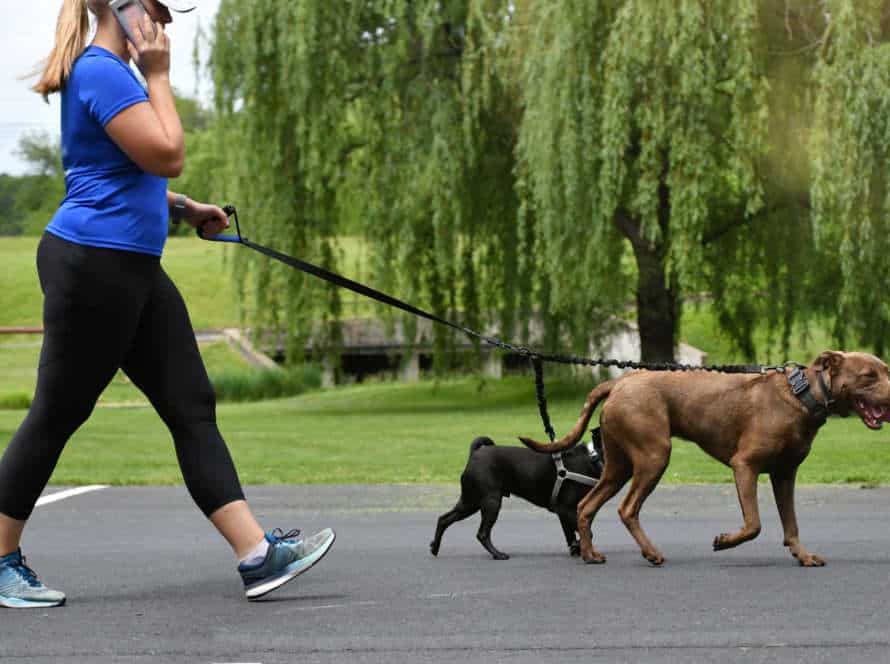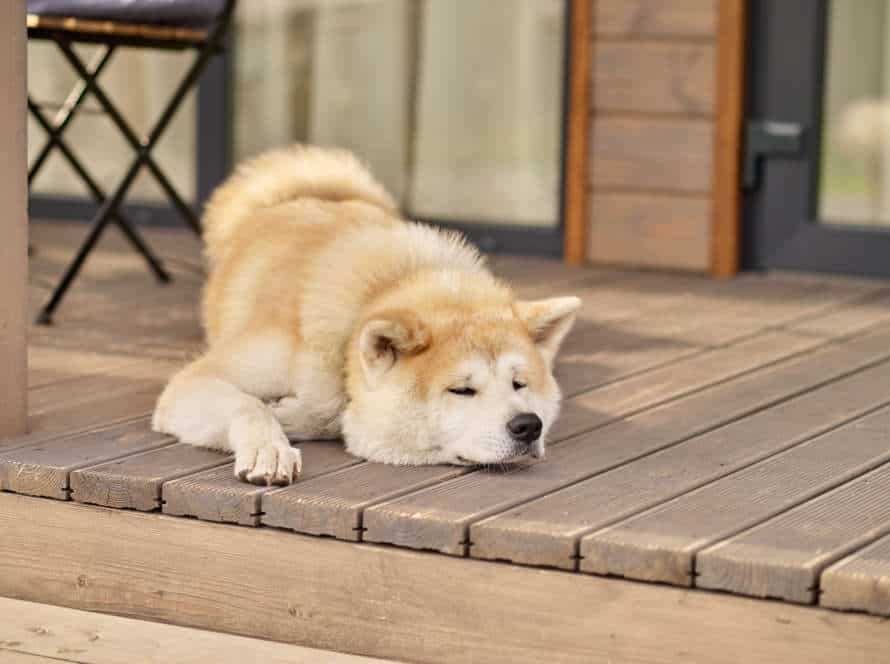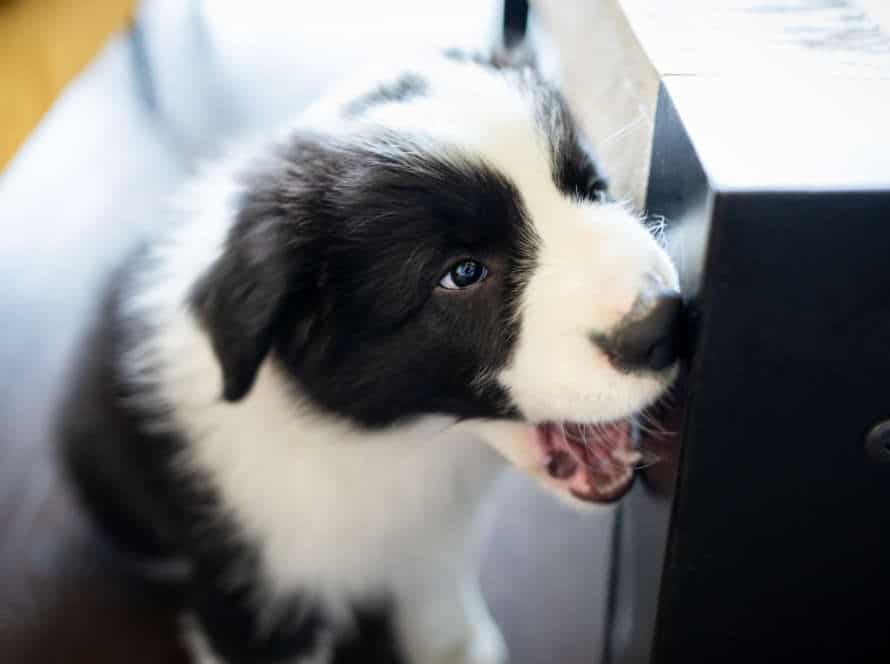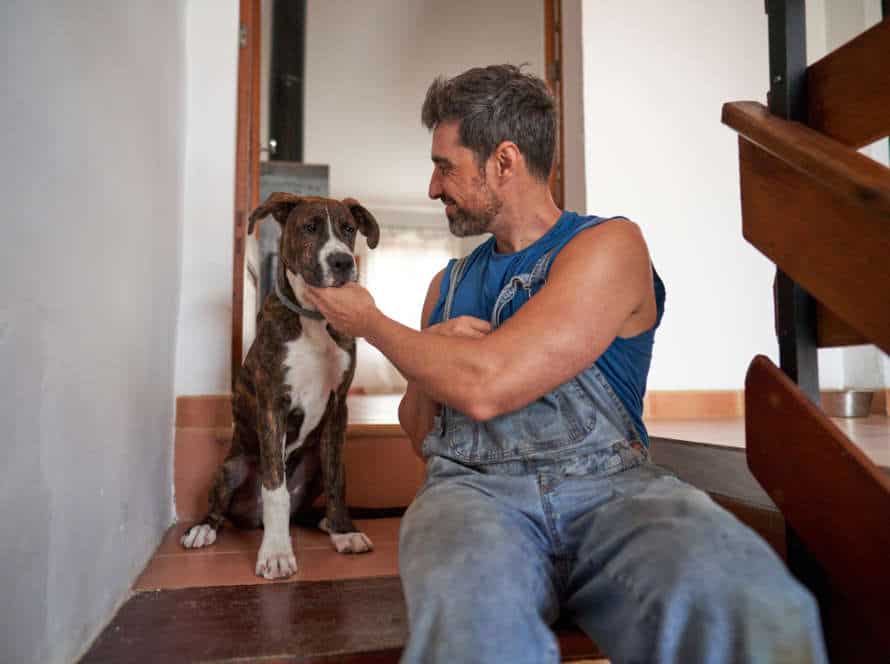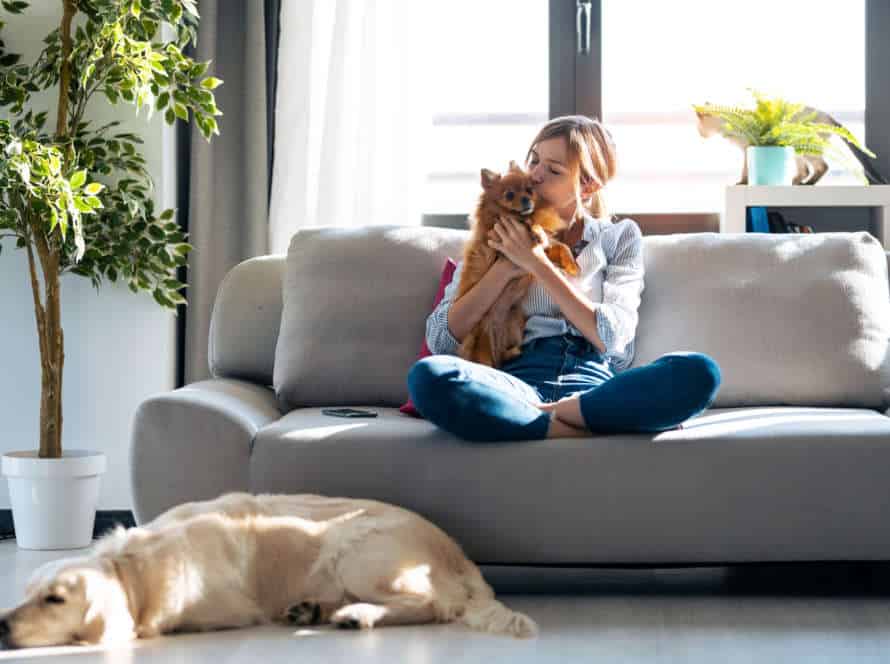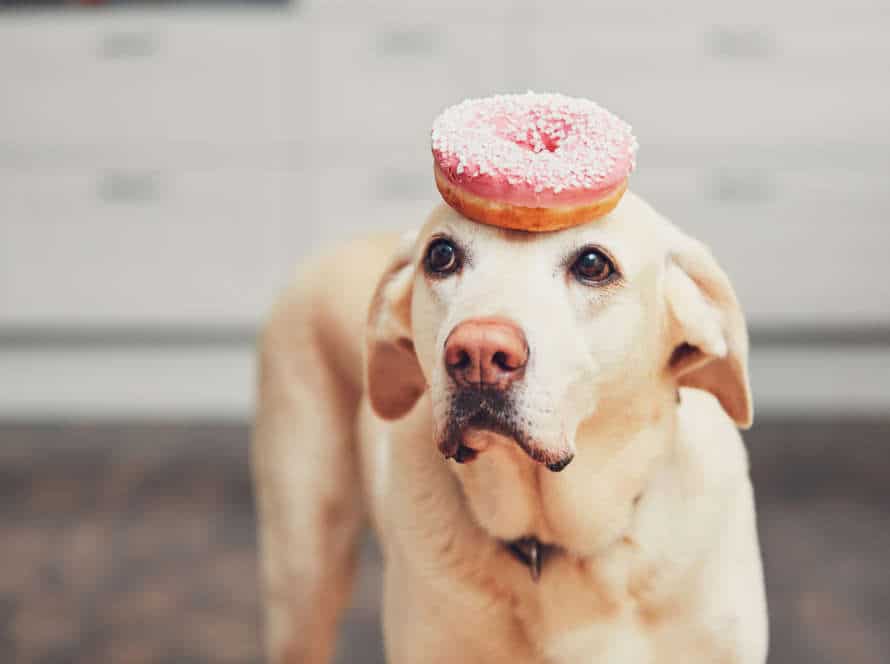Signs Your Dog Needs to Go Potty
You can spot signs from your pup to tell when they need to go potty and learn to go in the right place. Such signs may vary from dog to dog. Common cues to keep an eye out for include sniffing, circling, whining or whimpering, and heading towards the door. Let’s have a closer look at the signs that your dog needs to go potty.
Frequent trips to the door
Take note if your pup is heading toward the door frequently. It could be a sign they need to go potty! Other signs to watch for:
- pacing, whining and sniffing
- a sudden change in behavior, like agitation or restlessness
- Or, they may be sniffing the ground or circling in one spot
- Or, licking or biting their private area
- Plus, standing near the door or window and whining, barking or scratching to get out.
It’s important to recognize these signs and let your pup out often. Especially if they are young or elderly. A consistent potty schedule will help avoid accidents and keep your pup healthy and happy.
Whining, barking, or pawing at the door
Pawing, barking, or whining at the door? Common signs your pup needs to go potty. As a pet owner, understanding your dog’s bathroom habits is essential for their well-being and avoiding accidents.
Here are other signs to watch for:
- Circling or sniffing the ground? Searching for a spot to go.
- Restlessness or pacing? Could be they need to go outside.
- Licking or sniffing their genital area? Typical signal they need to pee or are in discomfort.
- Whimpering or crying? Could be distress or they have to go potty.
Pay attention to your pup’s behavior and environment. Anticipate their needs and keep them healthy and happy.
Pro tip: Train your dog to communicate their needs. Make it easier for both of you and improve your bond.
Restlessness or pacing
Is your dog restless? Or pacing?
These can be signs that your pup needs to go outside. Also, look out for whining, sniffing the ground, pawing at the door, standing by the door, or becoming more alert or active.
If you spot any of these signs, take your pup outside to their designated potty area immediately. Don’t forget to reward them with praise and/or a treat for going pee in the right place.
Pro Tip: Having a consistent potty routine can help to stop accidents and make potty training easier!
Physical Signs Your Dog Needs to Go Potty
When your pup needs to do their business, they may show physical signs. These are: sniffing, circling and squatting. Being aware of these signs helps you take your pup out when they need to go. Here are a few more signs to watch out for:
Circling or sniffing around a specific spot
Is your pup circling or sniffing around a particular spot? That’s a clear sign your furry friend needs to go out! But there are other signs too.
- Pawing or scratching at the door? Urgent need to go outside!
- Whining or barking? Attention-grabbing sign that they need to go potty.
- Turning in circles or pacing? They’re telling you they need to go outside.
- Squatting or lifting a leg? They definitely need to go out!
Pay attention to these physical signs and you’ll know when your pup needs to go potty, and avoid any accidents in the house.
Standing or sitting uncomfortably
Is your pup all of a sudden standing or sitting weirdly? That may be a sign they need to go potty. Being mindful of your pup’s physical signals is key for keeping them healthy and avoiding any accidents.
Here are some other signs to look out for:
- Whining/crying
- Restlessness/pacing
- Sniffing the ground excessively
- Circling or going to the door too often
- Licking their private area a lot
Be sure to take your pup out for regular potty breaks – especially after eating/drinking. Keep an eye out for these signs to guarantee your pup’s well-being!
Squatting or beginning to posture
Squatting or starting to posture? These could be physical signs that your pup needs to go potty. As pet owners, it’s important to observe and understand our dog’s mannerisms and habits. Here are some signs they need to go:
- Squatting or starting to posture? This means they need to go outside ASAP!
- Whining or pacing? If they’re doing either, it could mean discomfort and the need to go outside.
- Sniffing around? Dogs have a keen sense of smell. If they’re sniffing an area, it could be because they’ve found another animal’s urine or feces. They may want to mark their territory and go in the same spot.
- Circling? Dogs circle before they settle into a spot to relieve themselves. If they’re circling a spot repeatedly, they may need to go potty.
Pay attention to these physical signs and take your pup to their designated potty area. That’ll help avoid accidents inside!
Behavioral Changes That Indicate Your Dog Needs to Go Potty
Do you know when your pup needs to take a potty break? There are certain signs that can tell you. Sniffing, pacing and barking are all indicators. Let’s explore what to watch out for and how to respond!
Increased alertness or focus
Increased alertness? A sign your pup needs to go potty. Other signs? Here’s what to watch for:
- Whining or barking? If your pup does either persistently, it’s time for a bathroom break.
- Circling or pacing? When doggies need to go, they often walk in circles or pace back and forth.
- Sniffing or scratching the door? Yup, their noses tell them it’s potty time. Plus, they may scratch to get your attention.
- Sudden restlessness? If your pup was calm then gets active, it could mean they need to go out.
Keep an eye on your pup’s behavior. You’ll be able to prevent accidents and create a potty-break routine.
Sudden cessation of play or other activities
Cessation of play or activities suddenly? That’s one sign your pup needs to go potty. As a dog owner/handler, you must be aware of the signs.
- Sniffing the floor
- Whining
- Barking
- Pacing
- Alerting
- Staring at the door
- Circling around you
If you spot any of these, take your dog outside to their potty area right away. Wait patiently. Reinforce good behavior with rewards – treats or praise.
Going to their designated potty area without prompting
Dogs give signals when they need to go to the potty. As a pet owner, it’s essential to understand and recognize these behaviors. Here are some signs that your dog needs to go:
- Sniffing or scratching at the door.
- Whining or barking for no reason.
- Pacing or circling around.
- Sudden changes in behavior or restlessness.
Understanding these signs makes it easier to take your pup to the potty, avoiding accidents and keeping a clean home. Pro tip: Keep an eye on your dog’s behavior. Dogs need to pee every 2-4 hours.
Additional Indications Your Dog Needs to Go Potty
Wanna know if your pup needs to potty? Besides standard signals like barking and circling, there are other behaviors. It’s important to recognize these signs so you can take your pup outside before any accidents. Let’s explore extra signs of needing to go!
Changes in appetite or water consumption
Changes in appetite or water consumption? These can be telltale signs that your pup needs to go potty. Often, pet owners miss these signs, causing accidents in the house. Be aware of these changes in your dog’s habits!
Increased water intake? That means more frequent urination–so, more potty breaks are needed. Decreased appetite? This may indicate constipation, meaning more frequent poops. Take your dog out for extra potty breaks if you notice these changes. And, if they persist, take them to the vet.
Pro tip: Create a regular routine for your pup’s bathroom breaks. Reward good behavior outside to reinforce good habits.
Accidents or marking in the house
Dogs tell their owners they need to go out in many ways. To avoid messes, watch out for these signs:
- Restlessness – Is your pup uneasy, moving around? It’s a sign they need to go outside.
- Sniffing – When they gotta go, they’ll sniff around for a spot.
- Alertness – When they suddenly become alert, it’s time to go.
- Whining/Barking – Whining or barking is their way of saying they need to go out.
- Pacing – Sometimes they’ll pace back and forth when they gotta go.
Be aware of their behaviour to prevent accidents. Pro Tip: Note how often they need to be taken out and do it regularly.
Unusual lethargy or lack of energy
Is your pup extra lethargic or sluggish? This could be a sign that it’s time for them to go potty. Pay attention to their behavior, especially when it comes to pot restlessness, sniffing, whining, and pacing. These are all signs that they need to go.
Also, if they are taking frequent bathroom breaks, it could indicate bladder issues. As a pet parent, it’s important to take action whenever you think they need to go potty.
Frequently Asked Questions
1. How often should I take my dog outside to potty?
Answer: It is recommended to take your dog outside to potty every 2-4 hours if they are fully grown, and every 1-2 hours if they are a puppy.
2. What are some signs that my dog needs to go potty?
Answer: Signs include pacing, whining, sniffing around, circling, scratching at the door, and suddenly becoming restless or anxious.
3. Can dogs hold their urine for a long time?
Answer: Dogs can typically hold their urine for up to 6-8 hours, depending on their age, size, and overall health. However, it is not recommended to make them wait that long if possible.
4. How can I get my dog to signal me when they need to go potty?
Answer: You can train your dog to use a bell or paw at the door when they need to go out by consistently using the same signal every time you take them outside to potty.
5. What should I do if my dog has accidents in the house?
Answer: It is important to clean up the mess thoroughly and use enzymatic cleaners to eliminate the scent. Take your dog outside more frequently and supervise them more closely to prevent future accidents.
6. When should I see a vet if my dog is having potty issues?
Answer: If your dog is suddenly having accidents in the house, straining to urinate, or showing signs of pain or discomfort while urinating or defecating, it is important to see a vet to rule out any underlying health issues.

